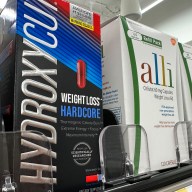As the seasons change, so should your tires.
You’ve probably noticed that the nastier-weather varieties are now called winter tires, rather than snow tires. This isn’t just the same product with a new name.
Winter tires provide superior traction in all types of winter conditions, from deep snow, to puddles, to dry pavement.
The main differences between tires are in their tread and rubber compounds. Winter treads are more aggressive so they can bite into snow, and push slush and water out of the way.
This is very important, since tires that don’t properly channel water can create a situation, called hydroplaning, where the tire floats on top of puddles instead of maintaining contact with the asphalt below.
If your car hydroplanes, you don’t have control of it.
The formulation of the rubber compound is also important, as rubber gets soft in the heat and hard in the cold — exactly the opposite of what you want it to do in your tire.
The softer compound in winter tires helps them to stick to the pavement, although it does make them wear faster, one of the trade-offs of good winter tires.
So-called “all-season” tires are halfway between summer and winter ones.
They’re better described as “three-season” tires, since they’re inferior to the performance of winter tires at a time when driving can be most treacherous. Some companies offer a new “four-season” version, which meets winter tire standards, identified on all tires that do so by a stylized logo of a mountain and snowflake moulded into the sidewall.
These four-season tires primarily use an all-season compound with a more aggressive tread, which will be noisier in summer and use more fuel.
Good tires aren’t cheap, but the highest price doesn’t always guarantee the most appropriate tire. Several consumer groups rate winter tires; in Canada, the Automobile Protection Association offers a free comparison chart of some 50 tires at APA.ca.
Switching to winter tires in the fall will not only improve the driving experience, but will extend the life of your all-season tires.
If your vehicle has large wheels, ask your tire dealer if it’s possible to replace them with smaller steel wheels and larger-diameter winter tires, which will save money and also protect your expensive aluminum rims from salt damage.
What type of winter driver are you?
Michelin recently conducted a survey to find out more about the different drivers on Canadian roads. Canuck drivers can be broken down into five different types, each needing specific help when it comes to tackling winter roads in Canada.
Here are some customized pointers for all types of drivers from the Michelin Winter Driving Academy.
Worrywarts
Worrywarts lack confidence at the wheel and worry they are surrounded by drivers who are less cautious than they are. Worrywarts can sometimes get paralyzed and stop in the middle of an ice-covered hill, or incline. Stopping in such a situation is never advisable as you may not have traction to begin moving again. Smooth, steady pressure on the gas to maintain forward motion is the key to conquering slippery inclines.
Daredevils & The Fast and Confident
Daredevils love a thrill at the wheel, and they don’t believe that speeding causes accidents. They love their cars and generally look after them with care. Similarly, the Fast and Confident aren’t afraid to drive fast, but they also like feeling in control when at the wheel.
They are not intimidated by winter driving, because they rarely get stressed at the wheel. Both of these types of drivers should remember in the winter to significantly increase their following distance and anticipate longer distance for braking to avoid losing control and causing an accident.
Cautious Pragmatists
Cautious Pragmatists consider cars first and foremost as a method of transportation, a way to get from point A to point B. They are cautious at the wheel and follow the recommendations of their car manufacturer or mechanic for maintenance.
These drivers will always ensure that they have a fully-prepared car with essential equipment for the winter.
Aficionados
Aficionados love the automotive world and understand the characteristics of different cars. These drivers are aware that most cars today have up to three different electronic-control systems that assist in maintaining traction and control.
All drivers should know their strengths and weaknesses so they can drive more safely during the treacherous winter months.
















